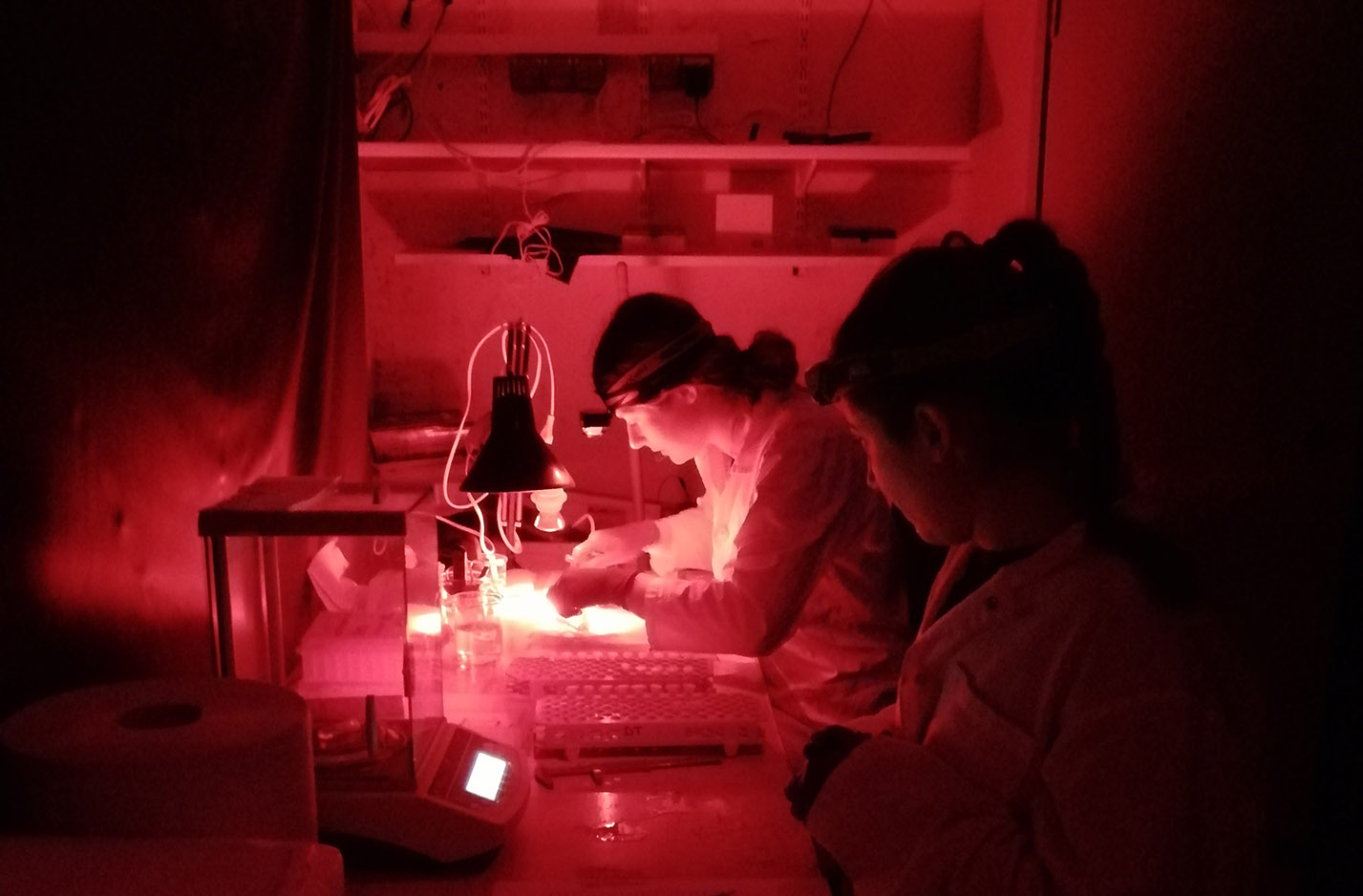Light Pollution Is Causing Oyster Insomnia
Even artificial light that’s dimmer than the full moon can knock oysters’ circadian rhythms out of sync.
Article body copy
In several quiet rooms in a marine lab in southwest France, dozens of Pacific oysters sit in large glass tanks, quietly living their oyster lives. Each morning, the lights come up slowly, carefully mimicking the rising sun, but at night the rooms never fully darken. The dim glow simulates the light pollution that increasingly plagues many marine species—even in natural habitats.
The results of the experiment, which were recently published, found that artificial light at night can disrupt oyster behavior and alter the activity of important genes that keep the animals’ internal clocks ticking.
Damien Tran, a marine scientist at the Paris-based French National Centre for Scientific Research, and one of the study’s authors, was surprised that even the lowest level of nighttime light that they tested—“below the intensity of the full moon,” he says—was enough to throw off the oysters’ circadian rhythm.
It’s especially remarkable, Tran says, when you remember that oysters don’t have eyes.
How oysters see is a bit of a mystery. While related bivalves, such as scallops, have eye-like organs, oysters likely use patches of specialized cells on their skin to detect light, though scientists have yet to identify the cells or figure out exactly how they might work.
In the recent study, Tran and his colleagues put four tanks of oysters in different rooms and exposed each to a different intensity of artificial light at night. The researchers compared the oysters’ responses with the responses of animals in a control tank that experienced complete nighttime darkness.
Tran’s colleague and coauthor, marine scientist Laura Payton, explains that shell movement is really the only oyster behavior that can be observed. The team fitted half of the oysters in each tank with electrodes to determine when the animals opened their shells—something oysters do to feed, breathe, and mate. In the control tank, oysters were most active in the middle of the day but started to close when the lights went out.
But exposure to artificial light at night caused the oysters in the other four tanks to stay open at inappropriate times, with activity peaking in the early evening. And while oysters have certain genes that typically turn “on” during the day and others that turn on at night, exposure to nighttime light eliminated the difference. For example, the oyster equivalent of a mammal gene that helps make melatonin is usually more active at night, but the researchers observed that the gene stayed highly active during the day, eclipsing the natural circadian rhythm.
In human terms, that’s called insomnia. In oysters, as Payton explains, this response could negatively affect their health, possibly making the animals more vulnerable to disease over the long term. Although, she concedes, many of the specific consequences have yet to be studied.

Marine scientist Laura Payton and graduate student Audrey Botté collect tissue samples from oysters previously exposed to artificial light at night at the French National Centre for Scientific Research marine lab in southwest France. The researchers work under red light to avoid exposing oysters to additional white light during the dissection. Photo courtesy of Damien Tran
If oyster populations do suffer, so would the ecology and economy of many regions worldwide, where oysters filter water, protect shorelines from storms, and, as a commercially grown species, provide food and jobs to communities.
Emily Fobert, a marine ecologist at the University of Melbourne in Australia who was not involved in the research, says the results are compelling. But she critiqued the researchers’ choice to expose just one tank of oysters to each level of artificial light. That means there’s a chance that the study results were caused by something else in the tank, rather than the light alone, she says. Fobert doesn’t question that the changes in oyster behavior and gene expression were due to the artificial light, but having multiple tanks per light level would have made the study more robust, she says.
Nevertheless, artificial light at night is a growing concern for many marine species. Oysters in particular need our help, Payton says, because they can’t run away when their environment is disturbed.
Technologically, Fobert says, it’s completely in our power to improve conditions for the health and well-being of marine species that are affected by light pollution. “We have huge opportunities to get it right.”

